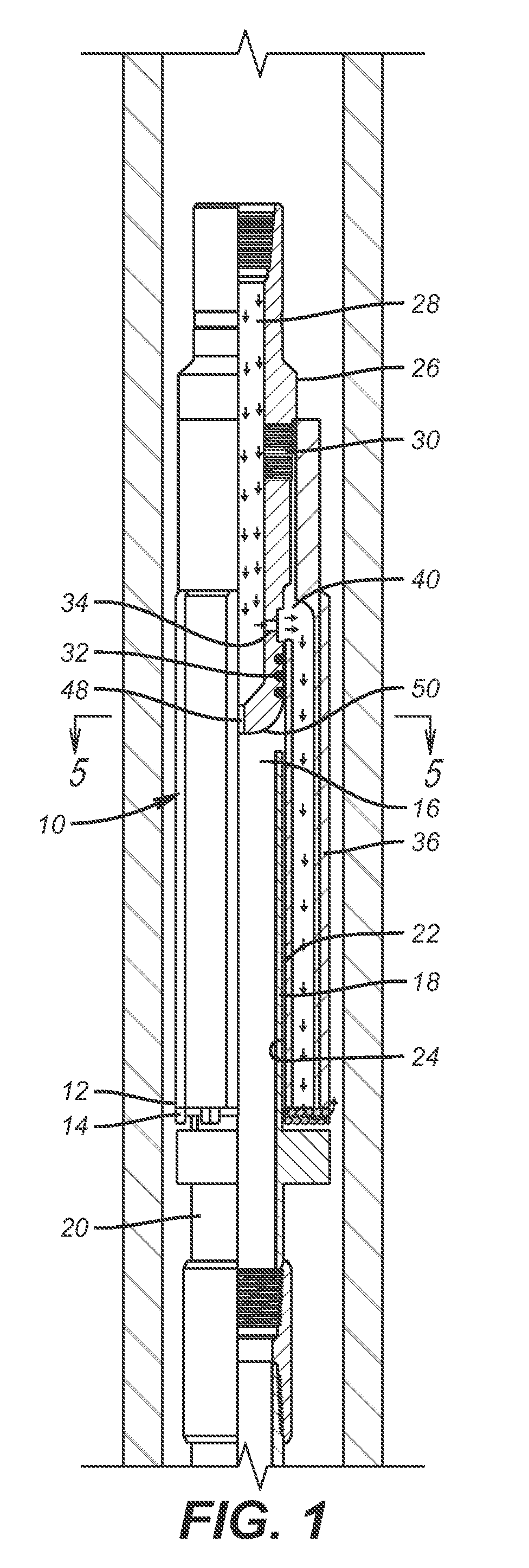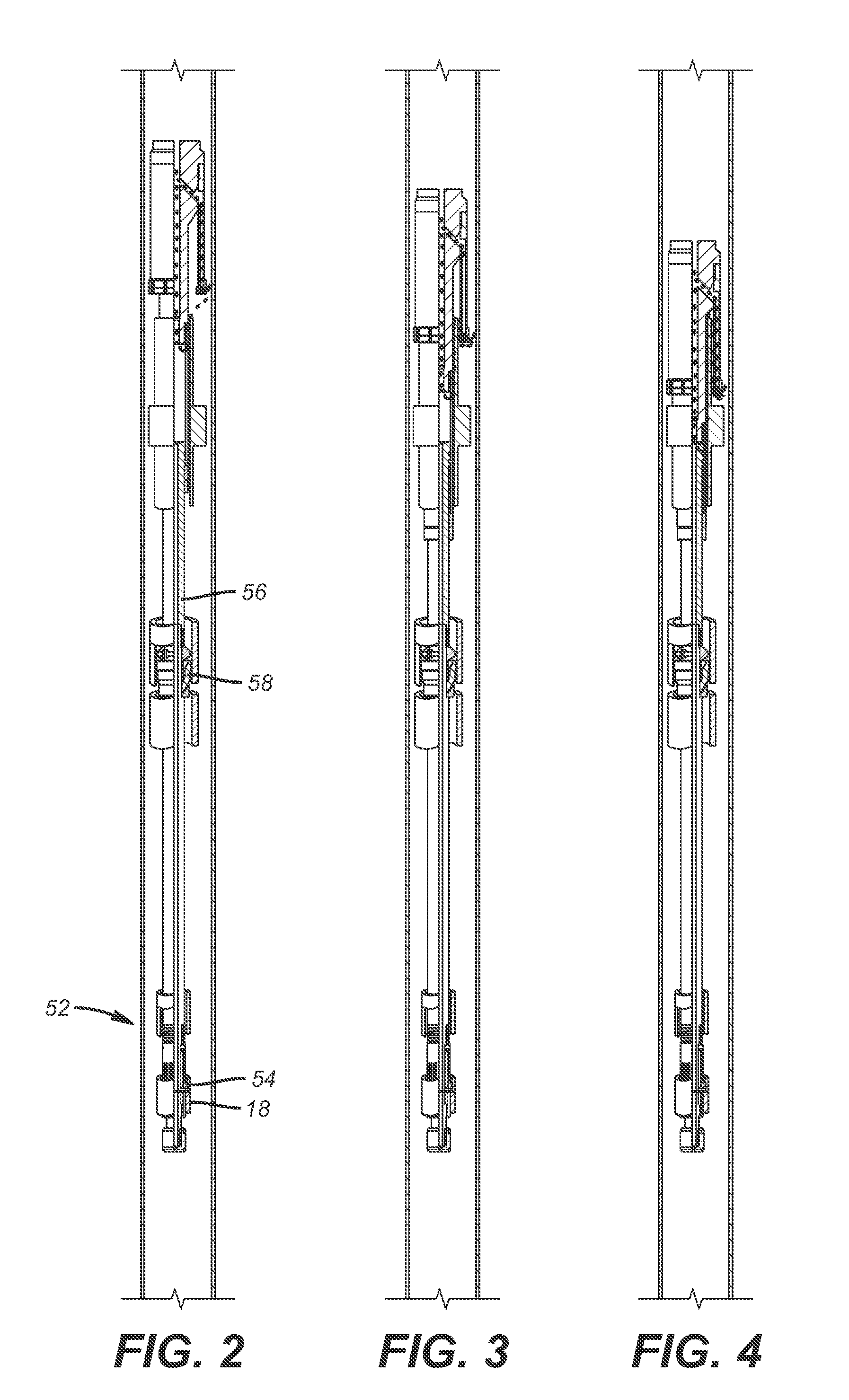Rotary Shoe Direct Fluid Flow System
a technology of fluid flow and rotary shoe, which is applied in the direction of fluid removal, drilling accessories, borehole/well accessories, etc., can solve the problems of inability to cool the cutting structure, inability to remove debris, and the inability to use the annular path between the mandrel and the inside wall of the shoe, so as to improve the cooling effect, reduce the loss of fluid to the formation, and remove debris.
- Summary
- Abstract
- Description
- Claims
- Application Information
AI Technical Summary
Benefits of technology
Problems solved by technology
Method used
Image
Examples
Embodiment Construction
[0017]The rotary mill or shoe 10 has a lower end 12 where the cutters 14 are located on the periphery in a known manner. There is an internal open area 16 through which the mandrel 18 of the packer 20 can enter as the milling progresses. An annular gap 22 is formed between the mandrel 18 and the inner wall 24 of the shoe 10. Flow is delivered from the surface through a string that is not shown and into flow distributor 26 that has a central passage 28. Seal assemblies 30 and 32 straddle one or more lateral openings 34. Shoe 10 has a body or wall 36 that is shown in section in alternative embodiments in FIGS. 5 and 6. In FIG. 5 there are tubes 38 that start at annular space 40 shown in FIG. 1 and terminate at a lower end near the cutters 14. Alternatively, in FIG. 5 the body 36 has drilled axial holes 42 to conduct cooling fluid that removes the cuttings from the location of the cutters 14. As before the drilled holes start at annular space 40 and continue axially to the location of ...
PUM
 Login to View More
Login to View More Abstract
Description
Claims
Application Information
 Login to View More
Login to View More - R&D
- Intellectual Property
- Life Sciences
- Materials
- Tech Scout
- Unparalleled Data Quality
- Higher Quality Content
- 60% Fewer Hallucinations
Browse by: Latest US Patents, China's latest patents, Technical Efficacy Thesaurus, Application Domain, Technology Topic, Popular Technical Reports.
© 2025 PatSnap. All rights reserved.Legal|Privacy policy|Modern Slavery Act Transparency Statement|Sitemap|About US| Contact US: help@patsnap.com



